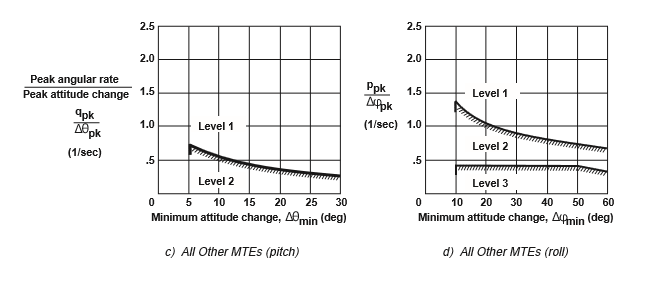ENHANCED HELICOPTER HANDLING QUALITIES THROUGH VIBRATORY LOADS EXPLORATION BY EZGI AKEL (ESR#9)
Handling quality of the helicopter can be basically explained as helicopter stability (or instability) and controllability in flight, and pilot’s ability to maneuver the helicopter and their comfort. This is affected by a long list of parameters, hence there are certain requirements that need to be satisfied starting from the design stages of the helicopter. The existing handling quality requirements document for rotorcraft is the ADS-33. It is applicable to both augmented and unaugmented helicopters. These requirements are generally adapted from the fixed wing requirements and flying and handling quality criteria. However, rotorcraft are different from the fixed wing designs since they need to operate in difficult conditions and need to complete difficult tasks and maneuvers. Both design and pilot workload are affected from these difficult operating environments. Pilot workload starts to increase and helicopter design starts to include more moving parts and complex mechanisms which result in higher vibration levels. Vibrations can be categorized in many ways but mostly according to their frequency. The main idea of this research is to analyze main rotor induced vibrations and their effect on handling qualities. Vibrations can change according to the mission task. ADS 33 is essentially a mission oriented specification, with criteria depending on selected mission task elements (MTEs), response types and usable visual cue environments as in Figure 1

Figure 1: Requirements for moderate-amplitude pitch attitude changes – hover and low speed [1]
The research problem arises here, how to maintain high agility needed for high operational capability without developing high vibrational loads? This research uses multi-disciplinary approach to solve this problem because there is a trade-off between agility and performance required for a mission and the vibration. It is also important what is appreciated by pilots in terms of handling qualities. There is a matrix that involves different level of agilities and vibrational loads for every task and there are many research going on to reduce the rotor induced vibratory loads in design. Hovewer, which case is the most preferred one or the one that the pilot handles the helicopter more easily in that matrix is a question that this research will deal with. Last but not least, the aim is to make a connection between handling quality and vibration to make these rotary wing aircrafts safer and more comfortable.
ADS-33 is essentially a mission-oriented specification, with criteria depending on selected mission task elements (MTEs), response types, and usable visual cue environments. The strength of ADS-33 lies in the new criteria and metrics introduced to maximize mission effectiveness while not compromising safety. These criteria offer the designer the proper tools for designing helicopters capable of performing difficult operations. Performing difficult operations implies designing for high agility while at the same time optimizing for flight in degraded visual environments. High agility occurs at the boundaries of the performance where high vibratory loads are developed in the structure. Therefore, designing for high operational capability requires a trade-off between agility and vibration. One of the questions arising in the design when assessing a rotorcraft’s handling qualities (HQs) is: How can one at the same time tackle the aircraft maneuver performance and the vibratory loading problem? A new series of guidelines and tools are, therefore, needed, capable of dealing with the multi-disciplinary nature of such a complex question.
The present paper presents a new approach to multi-disciplinary optimization by developing a set of complementary metrics drawn from ADS-33, capable of being applied to a rotorcraft for both agility enhancement and structural load alleviation. In this sense, the paper will give an example how the new metrics can be further used in the design of control functions that utilize multi-harmonic inputs, properly phased for simultaneous performance enhancement and vibratory reduction. The paper concentrates on developing and exercizing the new approach to vertical-pitch maneuvers in forward flight. These types of maneuvers are a good example of how the agility and structural loading problems link with each other in maneuvering flight.
References
[1] ADS-27A-SP and ADS-33
[2] A. Datta, I. Chopra, “Prediction of UH-60 Main Rotor Structural Loads using CFD/Comprehensive Analysis Coupling”, Presented at the 32nd European Rotorcraft Forum, Maastricht, The Netherlands, September 12-14, 2006.
[3] C. Ockier, “Flight Evaluation of the New Handling Qualities Criteria Using the BO105”, in American Helicopter Society, Missouri, 1993.
[4] M. D. Pavel and G. D. Padfield, “Defining Consistent ADS-33 – Metrics for Agility Enhancement and Structural Loads Alleviation “, in Annual Forum Proceedings of the American Helicopter Society, volume 58. American Helicopter Society, 2002.
[5] M. D. Pavel and G. D. Padfield, “The Extension of ADS-33—Metrics for Agility Enhancement and Structural Load Alleviation “, Journal of the American Helicopter Society, 51(4):319–330, 2006
[6] Northrop Grumman – UH-60L Black Hawk Helicopter Cockpit Digitization [720p] – YouTube
[7] https://www.youtube.com/watch?v=_q5CzBilhSs
[8] Leonardo helicopters video from https://www.youtube.com/watch?v=tkJh6Jb0r6U

0 comments
Write a comment